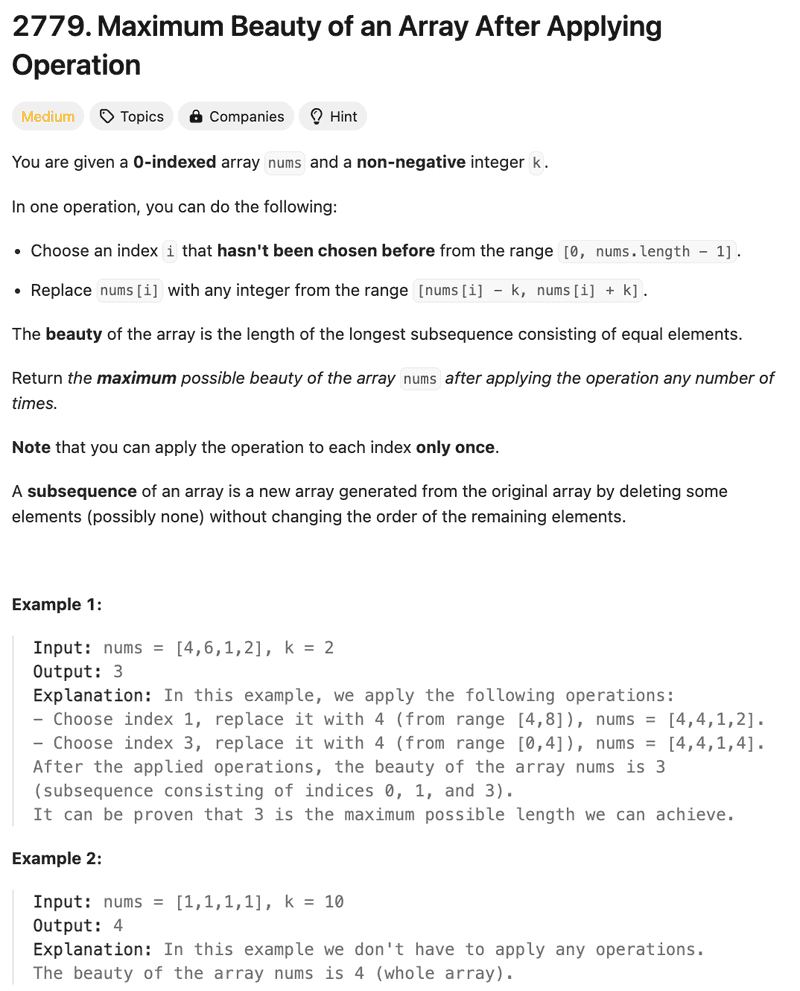< All posts
2779. Maximum Beauty of an Array After Applying Operation
December 11, 2024
문제 설명
이 문제는 다음 연산을 수행했을 때, 가장 큰 beauty를 구하는 문제이다. 이때, beauty는 동일한 숫자가 여러번 나오는 subsequence이다.
연산:
- nums의 두 숫자를 선택한다. (nums[i], nums[j])
- 숫자를 [nums[i]-k, nums[i]+k] 사이의 값으로 바꿀 수 있다.

풀이 및 해설
1차 풀이

테케는 다 통과했으나, TLE로 실패. 어떻게 더 빨리 할 수 있을까? 아무래도 for loop 두개 돌리면서 느려지는것 같긴 하다.
이를 어떻게 더 빠르게 쓸 수 있을지 고민하다가, difference array를 선택하게 되었다. 이는 제일 먼저 앞에 나온 수를 더하고, 마지막 나온 수를 빼는 방식으로 구현할 수 있다.
그렇게 한다면 O(n)으로 구현이 가능하다.
풀이
class Solution:
def maximumBeauty(self, nums: List[int], k: int) -> int:
# Handle edge case where nums is empty
if not nums:
return 0
max_num = max(nums)
# Initialize counts and a difference array
counts = [0] * (max_num + k + 2) # One extra for boundary handling
n = len(nums)
# Update the difference array based on each number in nums
for i in range(n):
start = max(0, nums[i] - k)
end = min(max_num + k, nums[i] + k)
counts[start] += 1 # Increment at start index
counts[end + 1] -= 1 # Decrement just past end index
# Apply the difference array to get the actual counts
for i in range(1, len(counts)):
counts[i] += counts[i - 1]
# The maximum value in counts is the answer
return max(counts)
Complexity Analysis

시간 복잡도
- O(n) : nums의 길이만큼 for loop을 돌아야 하므로 O(n)이다.
공간 복잡도
- O(n) : counts 배열을 nums의 최대값 + k + 2만큼 사용하므로 O(n)이다.
Constraint Analysis
Constraints:
1 <= nums.length <= 10^5
0 <= nums[i], k <= 10^5